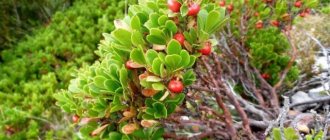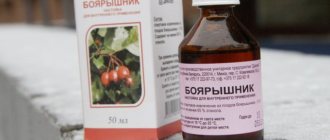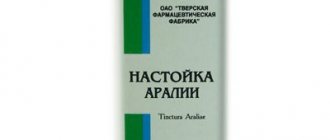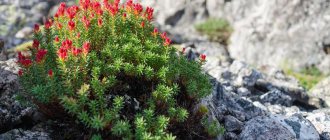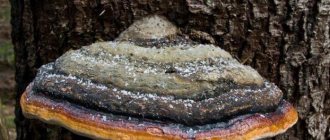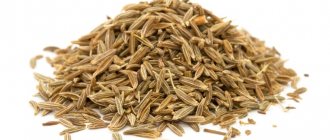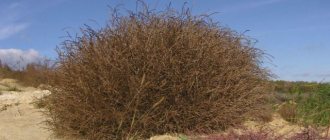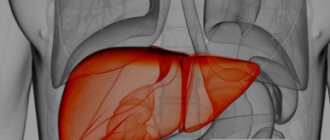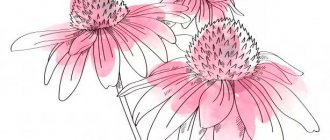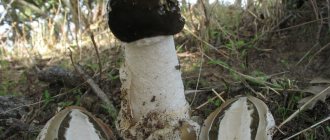Elderberry belongs to the branched shrubs of the Adoxaceae family. Since ancient times, elderberry has been used as a medicine in medicine, as an ornamental plant in gardens and as a culinary ingredient in dishes. It is even used as a means of fighting rodents. Even in Ancient Rome and Ancient Greece, the plant was grown for the preparation of medicines. Elderberry is revered by some peoples as a sacred tree; herbalists prepare healing tinctures and decoctions based on its fruits. Nowadays, these healing drugs are forgotten and unpopular by many, although black elderberry is used in pharmacology as a medicinal raw material. Elderberry is popularly called buzovnik, sambuca, pishchalnik or elderberry. There is a version of the origin of the botanical name of the plant. According to this version, the name is associated with a musical instrument called “sambuca”, which means “red paint” in Latin. Sambuca was made from the wood of the plant.
general characteristics
Elderberry is a plant with a trunk up to 7 meters long and up to 30 centimeters wide. Elderberry grows up to 60 years. The crown of the plant is rounded, the leaves are large, up to 30 centimeters long. The flowers are yellow-white, with a pronounced fragrant smell, collected in bunches. Elderberry blooms from May to June, berries appear in August-September. Black elderberry berries are round berries 5-7 millimeters in diameter, collected in clusters.
Content:
- general characteristics
- Chemical composition and calorie content
- Beneficial features
- Harm and contraindications
- Collection and storage
- Application in medicine
- Traditional medicine recipes
- Use in cooking
Wild elderberry grows in nature among other shrubs on the edges of forests, in parks, along the banks of rivers and reservoirs. Most often, the plant is found in Belarus, Ukraine, the Caucasus, the Baltic states and southeast Russia. It is also found in North and South America, Algeria, Tunisia and the Azores.
Elderberry is one of the unpretentious shrubs that grows well in both shade and sunny places. It is important to distinguish black elderberry from red elderberry. Black elderberry is a medicinal plant, and red elderberry is one of the plants that is poisonous and dangerous to humans.
Dried inflorescences and fruits of black elderberry are used as medicinal raw materials. Roots, bark and branches are less commonly used as medicinal raw materials.
Chemical composition and calorie content
The chemical composition of elderberry includes many substances. The flowers of the plant contain flavonoids, glycosides, essential oil, carotene, organic acids (acetic, malic, ascorbic, valeric, caffeic, chlorogenic), tannins, sugars, mineral salts and resins. Elderberry fruits contain ascorbic and acetic acids, carotene, fructose, glucose, amino acids, resins, pectins, tannins, vitamins C and. The leaves and green fruits contain the poisonous glycoside sambunigrin. Dry leaves contain provitamin A1. The roots of the plant contain tannins and saponins.
It is important to note that fresh berries and flowers of black elderberry contain the substance amygdalin, which can be converted into hydrocyanic acid. But during drying, this substance evaporates, and the workpieces become suitable for consumption.
The calorie content of black elderberry is 73 kcal. Nutritional value per 100 grams of fruit contains:
- proteins – 0.65 grams;
- fats – 0.5 grams;
- carbohydrates – 11.5 grams;
- ash – 0.65 grams;
- water – 79.8 grams.
Beneficial features
In ancient times, rural residents actively used black elderberry in their diet. Young elderberry shoots were added to spring salads. The juice of the berries after fermentation was used to obtain a strong tincture. Flowers of the plant were added to white grape wine to impart a muscat flavor. The juice of the berries also served as a dye for alcoholic drinks. Fresh flowers were added to water with lemon juice to create a refreshing drink.
Traditional medicine uses the fruits, flowers, leaves and bark of black elderberry. Fresh and dried elderberries have beneficial properties that are successfully used in the treatment of peptic ulcers, hepatitis, as well as for their prevention. Fresh fruits of the plant are very useful for diseases of the nervous system. Dried elderberry fruits are used in the treatment of malaria. According to medical research, it is believed that the healing properties of the plant are so enormous that it can be used as an additional remedy for stomach cancer and skin cancer.
When fighting stomach cancer, the patient needs to take berry jam, and when fighting skin cancer, it is recommended to squeeze and prepare a drug with wine.
Due to the presence of choline, essential oil, rutin, valeric, acetic and malic acids, black elderberry flowers are considered valuable healing agents. Tinctures and decoctions are made from the flowers of the plant for antibacterial and diaphoretic effects. Therefore, it is recommended to use such infusions and decoctions during colds, sore throats or flu. For effective treatment, take one tablespoon of flowers and pour 200 grams of hot water and bring to a boil. Then cool and drink half a glass warm before meals. This decoction is useful in the treatment of gout, rheumatism, and arthritis.
Black elderberry leaves have a diaphoretic, antipyretic, astringent and soothing effect. Steamed leaves remove inflammatory processes in skin diaper rash, hemorrhoids, boils and burns. In folk medicine, the leaves of the young plant are used as an effective remedy for chronic constipation. The fact is that they produce a laxative effect. To prepare the recipe, you need to prepare honey and boil the leaves of the plant in it. Take the decoction internally.
Elderberry bark also has healing properties in the fight against skin and kidney diseases. For treatment, a decoction is prepared from the bark of the plant, which is added to baths or used as lotions in the treatment of gout, arthritis and rheumatism.
To improve metabolism, use a decoction of the whole plant. Tinctures from dried fruits in a ratio of 1: 10 stimulate bile secretion and diuresis, and also improve intestinal function. Elderberry jam and jelly are good for the body. It is only recommended to prepare them without sugar.
In folk cosmetology, lotions for facial skin are made from flowers. They perfectly tone the skin and give it freshness and youthful appearance.
Useful and healing properties
The benefits of elderberry are due to the content of active compounds in certain parts of it. At the same time, this plant also contains a high content of some compounds that can harm the human body if products based on this plant are improperly prepared and used. Elderberry berries, the medicinal properties of which are recognized even by official medicine, are most often used in the treatment of colds, vitamin deficiencies and pathologies of the gastrointestinal tract. The benefits for these diseases are great.
The use of a berry-based product allows you to quickly suppress existing pathology. This herbal component is also used in the treatment of pathologies and cardiovascular disorders. Elderberry bark, roots and leaves are used to treat skin and joint diseases. Infusions and decoctions of these parts of the plant can quickly suppress the inflammatory process and eliminate other existing manifestations.
Benefits of flowers
Flower-based products help improve vision. They have a pronounced antioxidant effect. Before using elderberry flowers, the beneficial properties and contraindications of this plant component need to be studied in detail, since it includes a large number of active substances. If used incorrectly, such products can cause harm to the human body.
Tannins have an astringent effect, so the use of flower decoctions is recommended in the treatment of stomatitis.
Active compounds present in the inflorescences of this plant help suppress viruses and bacteria. Preparations based on black elderberry flowers have an enveloping effect, so their use has a beneficial effect on the condition of the mucous membranes of the gastrointestinal tract.
Benefits of berries
Eating the fruits of this plant helps improve vision. The active components contained in the berries have a positive effect on blood vessels, reducing their fragility and increasing elasticity. Elderberry berries have a pronounced anti-inflammatory and hemostatic effect.
The consumption of these fruits also has a beneficial effect on the composition of the blood. The mucus and tannins contained in the fruits have a positive effect on the condition of the gastrointestinal tract.
Benefits of roots
The bark and root contain substances that have a pronounced antihemorrhoidal and antidiarrheal effect. These components of black elderberry are often used in the treatment of skin diseases. Products based on these herbal components can be used to eliminate some cosmetic defects. These parts of the plant can be used to a limited extent to eliminate certain pathologies of the digestive system.
Beauty benefits
Eating black elderberry helps saturate the body with nutrients, which has a beneficial effect on the condition of the skin, nails and hair. The fruits are often used to cleanse pores of subcutaneous fat. Masks based on leaves and bark have a drying effect on the skin.
Harm and contraindications
Elderberry has some peculiarities in its chemical composition that may be harmful to people prone to certain diseases. First of all, red elderberry is very dangerous to human health. When touching red elderberry berries, you must wash your hands with soap, and if you come into contact with mucous membranes or cuts, you must immediately consult a doctor. It is not always possible to distinguish red elderberry from black elderberry. This is possible only during the ripening period of the berries. Therefore, it is necessary to know exactly what species the plant belongs to when collecting flowers, leaves and bark.
The fruits are not recommended to be taken during pregnancy, with nonspecific ulcerative colitis and with diabetes insipidus. The fruits of the plant are especially contraindicated for Crohn's disease. Consumption of elderberry has a negative effect in case of chronic stomach diseases, as well as in case of individual intolerance to the body. It is also not recommended for use by children under 12 years of age.
Excessive intake of black elderberry can lead to nausea, vomiting and poor health.
Side effects of elderberry
Black berries definitely have many health benefits. Eating cooked berries or making your own elderberry syrup can help you stay healthy.
Most doctors believe that elderberry is safe to use in small doses. However, unripe or raw berries can cause nausea, vomiting and diarrhea. Large quantities may cause even more serious poisoning. Leaves, stems and raw fruit may contain toxins.
If parts of the plant are not properly cooked, the result may be poor health. Some people may be allergic to elderberry.
Can elderberry be taken during pregnancy? Today, there are no studies on the effects of elderberry on pregnant women. Hence, the advice: it is better to completely avoid contact with elderberries during pregnancy.
At the same time, there is no data on the effect of elderberry on lactation and breastfeeding. Even if cooked elderberry is not toxic, doctors still recommend avoiding elderberry while you are breastfeeding.
Collection and storage
The collection of flowers begins from late May to mid-summer. Flowers are sensitive to moisture, so they must be collected correctly to avoid spoilage. It is recommended to collect raw materials from 2 to 3 o'clock in the afternoon in clear weather. Cut off the blooming flowers in inflorescences. The collected flowers should be immediately sorted and dried in air or in the oven at a temperature of about 35 ° C. Dried flowers should not be stored in plastic bags, as they will acquire an unpleasant odor and change color. Flowers can be stored for up to 2 years. The flowers taste sweetish with a faint aroma.
The fruits begin to be harvested at the end of summer. Unripe berries cannot be picked, they are poisonous. The berries are collected in a similar way. They are dried at a temperature of 60 ° C, after which the stalks are separated. The berries taste tart with a pronounced odor. The shelf life of the fruit is 6 months in an airtight container. If the berries are needed for making jam, marmalade or confiture, then there is no need to dry them. Fresh berries are suitable for use within 2 days. It is recommended to prepare juice from berries in a juicer or slow cooker, since in them the fruits remain whole and the juice does not produce bitterness. After preparing the juice, the berries are rubbed and the juice is expressed, and a healthy jam is made from the resulting pulp.
Collection of roots begins in late autumn. After collection, they are dried and ground into powder. The roots are stored for up to 5 years in airtight packaging. The bark of the plant is collected from a two-year-old bush in the spring before the buds appear. The bark is dried at temperatures up to 70°C and stored for up to 3 years.
Elderberry is stored in a dry and well-ventilated place. From time to time you need to sort through the workpieces, spoiled raw materials need to be thrown away.
Elderberry for respiratory diseases and ARVI
Black elderberry has a general strengthening and antiviral effect, therefore it is often used in the treatment of respiratory diseases. The most commonly used are tea and syrup. The plant's fruit extract can be used to reduce fever, because... it has an anti-inflammatory effect.
Berry tea
To brew tea you need to mix 1 tsp. rosehip and elderberry with 2 tsp. currant and strawberry leaves. Approximately 1 tbsp. collection should be poured with 1 glass of boiling water and left for 15 minutes. Elderberry tea should be drunk warm. You can add honey and sugar.
Cough syrup
To prepare an effective cough syrup, mix 1 kg of berries with 0.5 liters of water. The mixture must be boiled over low heat for 20 minutes. After this, you need to strain the composition. 0.5 kg of sugar is added to the liquid. After this, you need to boil the composition again. The finished product should be stored in the refrigerator and taken 1 tsp for cough.
High temperature extract
At high temperatures, pre-prepared extract of fresh berries should be taken 1 tbsp. 3 times a day. The product must be used for 7 days to facilitate sputum discharge.
Tincture for bronchial asthma
To prepare a remedy from black elderberry, which helps reduce the frequency of bronchial asthma attacks, you need to pour 100 g of dried berries with 200 ml of vodka. The product is infused for 3 days and then filtered. The tincture should be drunk 50 drops before meals 3 times a day. It is advisable to dilute it with water.
Jam
Consuming jam from the fruits of this plant helps reduce the duration of the acute period of ARVI. To prepare this product, you will need approximately 1 kg of ripe fruits, crushed to a pulp, mixed with 2 glasses of water and 1 kg of sugar. After this, the composition is boiled to the desired consistency.
Elderberry honey according to an old recipe
To make honey you will need approximately 300 g of elderflower flowers, about 1 kg of sugar and the same amount of water. Additionally you will need 1 tsp. citric acid. The flowers need to be compacted well into a pan, fill them with water and add sugar. The mixture should be infused for 12 hours. After this, it needs to be cooked for 30 minutes. After the broth has cooled slightly, you need to remove the flowers and squeeze them thoroughly. The composition should be placed on the fire again and simmered over low heat for at least 4 hours until it reaches the required consistency.
Application in medicine
In medicine, elderberry is used as a tonic, analgesic, antipyretic, antiviral and anthelmintic. Elderberry-based preparations also help with the following problems:
- metabolic disease;
- dropsy;
- swelling;
- menopause;
- headache;
- diabetes;
- hepatitis;
- arthritis;
- malaria;
- pigmentation;
- conjunctivitis;
- bronchitis;
- depression.
Best materials of the month
- Coronaviruses: SARS-CoV-2 (COVID-19)
- Antibiotics for the prevention and treatment of COVID-19: how effective are they?
- The most common "office" diseases
- Does vodka kill coronavirus?
- How to stay alive on our roads?
Decoctions and tinctures are drunk for viral diseases, and for inflammation of the oral mucosa they are used for rinsing. For gynecological diseases, baths are made based on decoctions. The fruits of the plant are successfully used in the treatment of mastopathy and prostate adenoma. Scientists have proven that fruits remove heavy metal salts and radionuclides from the body. Berries are added to teas for weight loss.
The leaves are used externally as lotions for diseases of the skin, joints, and tumors. Young buds and leaves are boiled in milk and used as applications for burns, inflammation, diaper rash and hemorrhoids.
Preparations from the bark of the plant are used as an emetic, laxative and diuretic for obesity, gout, tumors, pneumonia and toothache. The action of the drug from the bark has a selective effect and does not affect blood pressure. Baths based on elderberry bark help with rashes, ulcers, rheumatism and burns. It is effective to sprinkle powder based on the bark and roots of the plant on poorly healing wounds and weeping ulcers.
Traditional medicine recipes
Black elderberry tincture for the treatment of diabetes
- 1 tablespoon dried berries;
- 200 grams of boiling water.
Pour boiling water over the berries and leave for 20 minutes. Take 50 ml after meals.
Black elderberry tincture as a laxative
- 1 teaspoon dried fruits;
- 200 grams of boiling water.
Pour boiling water over the berries and leave for 15-20 minutes. Take 2-3 times.
Tincture of black elderberry fruits for the treatment of colds
- 15 grams of dried fruits;
- 200 grams of boiling water.
Pour boiling water over the berries and leave for 30 minutes. Take ¼ cup with honey 15 minutes before meals.
Black elderberry tincture for the treatment of constipation
- 10 grams of dried fruits;
- 200 grams of boiled water.
Pour chilled boiled water over the berries, leave for 2 hours and strain. Take 200 ml once daily.
Decoction of black elderberry leaves
- 1 tablespoon of leaves;
- 200 grams of boiled water.
Pour water over the leaves and boil for 5 minutes. Then leave until cool. Take a tablespoon three times a day for diabetes, gout, rheumatism and edema.
Elderberry juice in the treatment of tumors
- fresh berries;
- sugar.
Fresh black berries are placed in a three-liter jar 1.5-2 cm thick, sprinkled with sugar, then another 1.5-2 cm layer of berries and so on until completely filled. Leave for up to 30 days. Drink the resulting juice one tablespoon after meals three times a day. 15 minutes before meals, drink 150 ml of distilled water.
Alcohol-based elderberry juice for the treatment of mastopathy
- berries;
- 250 ml medical alcohol.
Squeeze 250 ml of juice from the berries of the plant and add 250 ml of alcohol to it. Drink the resulting solution with milk three times a day, starting with one drop. Reach up to forty drops, then reduce daily to one drop.
Methods for preparing and using black elderberry in folk medicine
To strengthen the immune system
Pour boiling water (200 ml) 1 tsp. flowers, leave for half an hour. Use once a day after breakfast for 1 month.
For colds and ARVI
For these diseases, you can use one of three recipes.
Infusion
Pour boiling water over 20 g of dried fruit and leave for 1 hour. Divide the resulting infusion into 3 parts and take it throughout the day before meals.
Tea
This drink relieves cough and fever. You can add honey and ginger to it.
Principle of preparation and use:
Place 2 tbsp in a thermos. l. dry raw leaves, pour 600 ml of boiling water. Tea should be drunk in small portions throughout the day.
Tincture
A tincture of vodka and elderberry helps fight cold symptoms. You need to take it 1 tsp. on an empty stomach before meals and before bedtime.
Sambucol, Black Elderberry, Effervescent Tablets, 15 Effervescent Tablets
★★★★★
628 ₽
Buy at a discount
To improve vision
Grind a tablespoon of fresh fruit in a glass, add hot water and leave for 15 minutes. Then you need to strain the mixture and add sugar or honey.
It is recommended to drink the drink for 5 days daily. Then you can take a break (2 days) and repeat the course.
For diabetes
Pour 2 tbsp. l. dry berries with water (300 ml), boil for 10 minutes and cool. The resulting decoction should be taken 100 ml 3 times a day, half an hour after meals.
For diseases of the digestive system
Kissel can be used as a laxative.
Method of preparation and use:
Pour 200 g of dry fruits with water (1 l), bring to a boil and simmer for 15-20 minutes. Cool half of the broth, add 5 tsp. potato starch and stir. Add 4 tbsp to the remaining mixture. l. sugar, a pinch of citric acid, put on fire, slowly pour the prepared starch solution into it, wait until it boils and cool. It is recommended to take jelly 1 glass.
To support liver function, you can make a decoction of the leaves.
Pour 15 g of raw material with water (150 ml), boil for 10 minutes, cool. Divide the decoction into 2 parts and drink one before breakfast and the second before dinner. The course of treatment is 2-3 weeks.
For mastopathy
Squeeze juice from ripe berries. Mix it with alcohol in a 1:1 ratio. The tincture should be dissolved in a spoonful of milk and drunk 1 drop 3 times a day for two weeks. Then you should take a 14-day break and repeat the course.
Nature's Way, Original Sambucus, Elderberry, Standardized Extract, 30 Lozenges
★★★★☆
898 ₽
Buy at a discount
For hypertension
Pour boiling water (250 ml) 1 tsp. black elderberry fruit and leave overnight. It is recommended to drink this infusion in the morning or evening before dinner.
For osteochondrosis
Pour ¾ of the dried berries with alcohol (70%). Close the container tightly and leave in a dark place for 1 month. This tincture can be used for compresses or rubbing for severe pain in the spine.
For prostatitis
For prostatitis, it is recommended to drink freshly squeezed elderberry juice - 1 tbsp. l. in the morning 1 hour before breakfast for 2 weeks in a row. Taking it relieves the aggravation.
For oncology
Sprinkle freshly picked berries with sugar in layers and leave for 1 month. The product should be taken according to this scheme: 30 minutes before meals, drink a glass of mineral or distilled water, then after eating, drink 1 tbsp. l. released elderberry syrup. The procedure must be repeated three times a day for 4 weeks.
For edema
Pour 1 tsp into a thermos. bark powder, pour 0.5 liters of boiling water and leave overnight. In the morning, strain the infusion. It is recommended to divide it into five doses and drink it throughout the day.
Nature's Way, Sambucus, Elderberry Syrup, Sugar-Free, 4 fl oz (120 ml)
★★★★☆
961 ₽
Buy at a discount
For external use
Mix 0.5 liters of milk with dried young elderberry leaves powder (3 tbsp.). In this solution you can moisten gauze and make poultices for skin diseases.
For joint pain, collecting elderberry leaves, roots and bark, wrapped in gauze and steamed with boiling water, will help. It should be applied warm to the sore spot, covered with cling film for half an hour.
